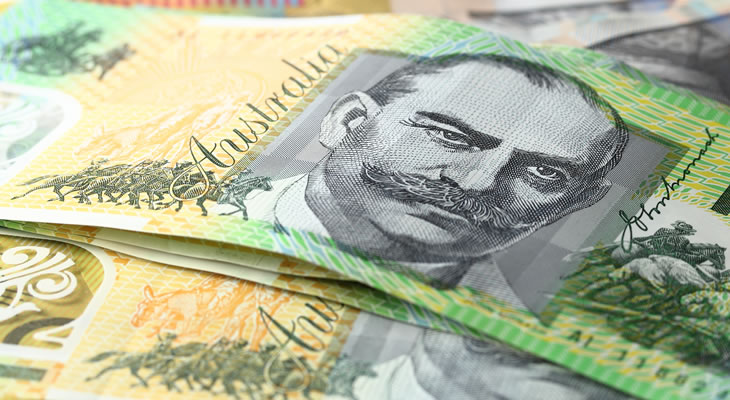- Pound AUD Exchange Rate Edges Higher – Strong US data holds ‘Aussie’ back
- Sterling (GBP) Boosted as Softbank buys ARM – UK tech giant purchased by JP company
- ‘Aussie (AUD) Weighed By Optimistic US Data – Commodity-currency-sentiment slips
- Forecast: UK Inflation Figures Ahead – As well as latest RBA meeting minutes
The Pound AUD exchange rate edged higher during Monday’s session as Sterling held onto most of last week’s gains. Low sentiment for commodity-correlated currencies as well as news that a JP company had bought out UK tech firm ARM Holdings helped Sterling capitalise against the ‘Aussie’.
GBP/AUD briefly peaked at a high of 1.7620 last Friday, but slipped to the level of 1.7409 at the end of the week. At the time of writing, the pair trended in the region of 1.7470, but its attempts to advance were hindered by a relatively sturdy ‘Aussie’.
Sterling (GBP) Boosted by ARM Holdings Buyout
Feelings were mixed on Monday, as globally known UK technology firm ARM Holdings was bought out by Japanese company Softbank for £24bn.
The move surprised markets due to the EU Referendum vote’s recency, and the general assumption in global market that UK investments would be considerably less appealing amid all the uncertainty of the UK’s vote to leave the European Union.
Many, including ARM founding member Hermann Hauser, were saddened by the news as they considered it to mark an end to ARM’s role as an autonomous industry leader. Hauser stated;
‘ARM has been the proudest achievement in my life and so it’s a very sad day for me personally and for technology in Britain.’
Despite this, it has been seen by others as a confidence booster and proof that UK businesses were still appealing despite the country’s motion to leave the European Union in the coming years.
The recently-appointed Chancellor of the Exchequer, Phillip Hammond, expressed confidence in the news in tweets made on Monday morning;
‘Decision by SoftBank to invest in @ARMHoldings shows UK has lost none of its allure to global investors – Britain is open for business
This would be largest ever Asian investment into the UK & would double size of ARM’s UK workforce. Big vote of confidence in British business’
As a result of the news, Sterling trended steadily throughout the day but was unable to reach last week’s highs.
Australian Dollar (AUD) Sentiment Mixed after Friday’s Optimistic US Data
After a sturdy week last week, the Australian Dollar experienced mixed movement during Friday’s US session as well as Monday’s session as investors reacted to the latest US data.
Positive retail sales figures as June’s US Consumer Price Index (CPI) scores indicated that the US economy was in relatively good health in June despite Brexit jitters taking hold of global markets.
The news boosted appeal of the US Dollar, as well as slightly increasing Federal Reserve rate hike bets. While most currently do not expect the Fed to hike the key interest rate amid worries of the Brexit’s effects on the global economy, hopes increased that the US economy would remain healthy regardless.
However, the Australian Dollar was relatively sturdy despite this news as overall confidence towards the currency remained sturdy.
Better-than-expected Chinese data released last Friday, including solid industrial production and growth data, thrust the ‘Aussie’ higher on Friday and continued to boost it on Monday. As Australia and China are close trade partners, strong Chinese data often boosts ‘Aussie’ sentiment.
Pound AUD Exchange Rate Forecast: UK Inflation and RBA Minutes Ahead
Tuesday’s session could influence GBP/AUD’s movement going forward this week, as key reports are due for both Britain and Australia.
The Reserve Bank of Australia (RBA) opted to leave monetary policy frozen in its July meeting. Meeting minutes due for release on Tuesday will likely give an indication of why this was amid Brexit-influenced panic in global markets. The report could also give insight into the central bank’s upcoming movements and considerations.
Meanwhile, the UK’s latest Consumer Price Index (CPI) report will also be released on Tuesday. This report covers British inflation throughout June, and as a result is likely to indicate the state of the UK economy in the run up to the EU Referendum vote on the 23rd of June.
The score is currently expected to remain steady at 0.2% in June, with a year-on-year increase if 0.3% to 0.4%. Previous forecasts have warned that Brexit jitters could take UK inflation to near-stagnation in Q2. These concerns would likely be worsened if June’s scores fall below expectations.
Overall, sentiment towards the ‘Aussie’ remains sturdy while the Pound is mixed and pressured by ongoing Brexit anxiety in the market. As a result, the Pound is unlikely to make considerable gains against the ‘Aussie’ in the coming week and could easily drop in the coming days.
At the time of writing, the Pound AUD exchange rate trended in the region of 1.7450, while the AUD Pound exchange rate traded at levels around 0.5730.


Comments are closed.